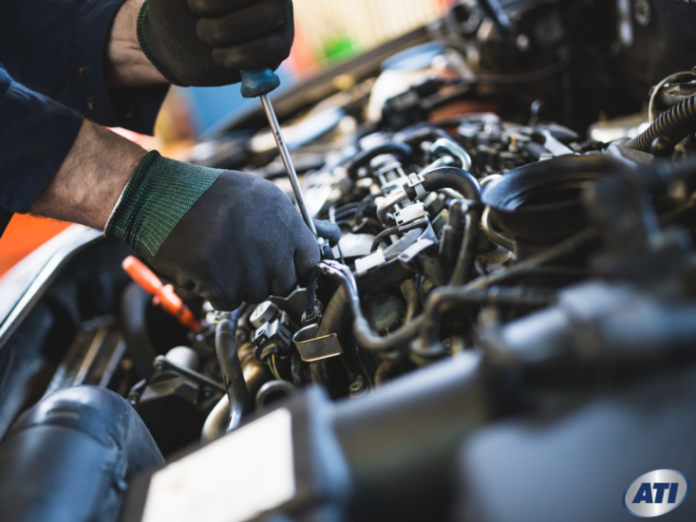Introduction
Are you tired of hearing a sloshing sound in your car every time you make a turn? Don’t worry, you’re not alone. Many car owners have experienced this annoying issue, which can be caused by various factors. One of the most frustrating issues car owners face is strange noises coming from their vehicles. Among these, the sloshing sound can be particularly annoying and worrisome. If you’re experiencing this sound, don’t fret! In this article, we will guide you through the process of fixing the sloshing sound in your car. Additionally, we will provide insights on car fix and starter replacements, ensuring your vehicle runs smoothly for years to come.
Understanding the Sloshing Sound
Before delving into the solutions, it’s crucial to understand the root cause of the sloshing sound. Typically, this noise occurs when water or liquid accumulates in certain areas of your car’s interior. Most commonly, the sound emanates from the footwell, particularly near the passenger seat. While it may seem harmless, the prolonged presence of liquid can lead to more severe issues such as rust, electrical problems, or mold growth.
Identifying the Cause
To rectify the sloshing sound, you’ll need to determine the underlying cause. Here are a few potential culprits:
1. Clogged drain tube
One potential cause of the sloshing sound is a clogged drain tube. In many cars, the air conditioning system and other components produce condensation, which needs to be drained away. Over time, debris and dirt can accumulate in the drain tube, causing it to become clogged. To fix this issue, locate the drain tube under your car and use a long, flexible wire or pipe cleaner to unclog it. Once the tube is clear, the sloshing sound should disappear.
2. Leaking sunroof or doors
Damaged seals around your sunroof or doors can allow water to seep into your car’s interior.
3. HVAC system issues
A malfunctioning heating, ventilation, and air conditioning (HVAC) system can cause condensation buildup and subsequent sloshing sounds.
4. Rust or corrosion
If your car’s underbody has rust or corrosion, water can enter and accumulate in the interior compartments.
Fixing the Sloshing Sound
Once you have identified the cause, it’s time to take the necessary actions to resolve the issue. Here are some solutions to consider:
1. Clearing drainage holes:
a. Locate the drainage holes in your car, typically found near the base of the windshield or in the sunroof channel.
b. Use a thin, flexible wire or a pipe cleaner to unclog the holes.
c. Flush the area with water to ensure proper drainage.
2. Checking and repairing seals:
a. Inspect the seals around your sunroof, doors, and windows for any signs of damage or wear.
b. Replace damaged seals with new ones to prevent water leakage.
3. HVAC system maintenance:
a. Check and clean the HVAC system’s drain tube regularly to prevent clogs.
b. Replace any faulty components or contact a professional for assistance.
4. Addressing rust or corrosion:
a. Thoroughly inspect your car’s underbody for rust or corrosion.
b. If detected, use appropriate rust treatment products and sealants to prevent further damage.
c. Seek professional assistance if the rust or corrosion is extensive.
Car Fix and Starter Replacement:
While addressing the sloshing sound, it’s an opportune time to delve into general car fix and starter replacement. Here are a few tips to guide you through the process:
1. Regular maintenance:
a. Adhere to the manufacturer’s recommended maintenance schedule for oil changes, filter replacements, and overall inspection.
b. Regularly check and replace worn-out belts, hoses, and spark plugs.
2. DIY repairs:
a. Educate yourself on basic car repair techniques through online tutorials or repair manuals.
b. Keep a well-stocked toolbox, including essential tools for minor repairs.
3. Starter replacement:
a. If your car exhibits difficulty starting, it may be due to a faulty starter.
b. Disconnect the battery, locate the starter motor, and remove the old starter following the manufacturer’s instructions.
c. Install the new starter and reconnect the battery, ensuring all connections are secure.
It is essential to understand this to ensure the proper functioning of your car. The starter is responsible for initiating the engine’s operation, and if it becomes faulty or worn out, your car may struggle to start or make strange noises. If you encounter any of these issues, it might be time to consider a starter replacement.
Conclusion:
The sloshing sound in your car can be irritating, but with proper troubleshooting and timely solutions, you can eliminate it and prevent further damage. Additionally, taking proactive measures by regularly maintaining and fixing your vehicle will ensure a smooth driving experience. By following the guidelines provided in this article, you can become a confident car owner capable of addressing and resolving various issues, including the sloshing sound and starter replacement.



